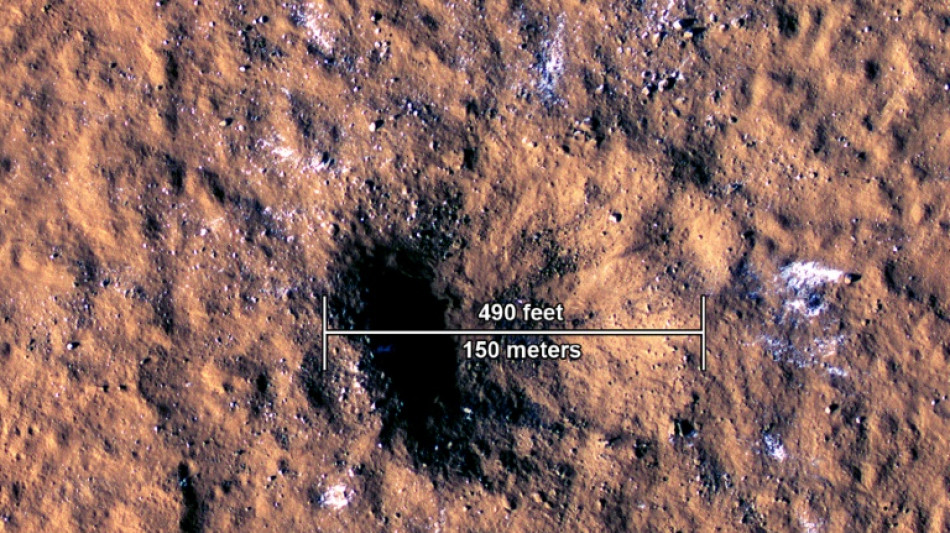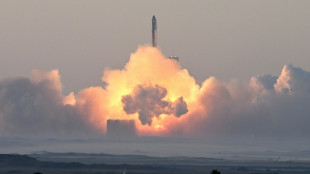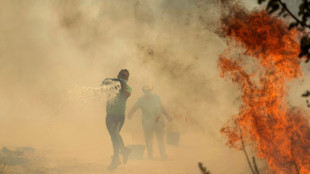
-
 El Salvador to jail gang suspects without trial until 2027
El Salvador to jail gang suspects without trial until 2027
-
Alcaraz survives to reach Cincy semis as Rybakina topples No. 1 Sabalenka

-
 Trump, Putin cite progress but no Ukraine deal at summit
Trump, Putin cite progress but no Ukraine deal at summit
-
Trump hails Putin summit but no specifics on Ukraine

-
 Trump, Putin wrap up high-stakes Ukraine talks
Trump, Putin wrap up high-stakes Ukraine talks
-
El Salvador extends detention of suspected gang members

-
 Scotland's MacIntyre fires 64 to stay atop BMW Championship
Scotland's MacIntyre fires 64 to stay atop BMW Championship
-
Colombia's Munoz fires 59 to grab LIV Golf Indy lead

-
 Alcaraz survives Rublev to reach Cincy semis as Rybakina topples No. 1 Sabalenka
Alcaraz survives Rublev to reach Cincy semis as Rybakina topples No. 1 Sabalenka
-
Trump offers warm welcome to Putin at high-stakes summit

-
 Semenyo racist abuse at Liverpool shocks Bournemouth captain Smith
Semenyo racist abuse at Liverpool shocks Bournemouth captain Smith
-
After repeated explosions, new test for Musk's megarocket

-
 Liverpool strike late to beat Bournemouth as Jota remembered in Premier League opener
Liverpool strike late to beat Bournemouth as Jota remembered in Premier League opener
-
Messi expected to return for Miami against Galaxy

-
 Made-for-TV pageantry as Trump brings Putin in from cold
Made-for-TV pageantry as Trump brings Putin in from cold
-
Coman bids farewell to Bayern before move to Saudi side Al Nassr

-
 Vietnamese rice grower helps tackle Cuba's food shortage
Vietnamese rice grower helps tackle Cuba's food shortage
-
Trump, Putin shake hands at start of Alaska summit

-
 Coman bids farewell to Bayern ahead of Saudi transfer
Coman bids farewell to Bayern ahead of Saudi transfer
-
Liverpool honour Jota in emotional Premier League curtain-raiser

-
 Portugal wildfires claim first victim, as Spain on wildfire alert
Portugal wildfires claim first victim, as Spain on wildfire alert
-
Davos founder Schwab cleared of misconduct by WEF probe

-
 Rybakina rips No.1 Sabalenka to book Cincinnati semi with Swiatek
Rybakina rips No.1 Sabalenka to book Cincinnati semi with Swiatek
-
Trump lands in Alaska for summit with Putin

-
 Falsehoods swirl around Trump-Putin summit
Falsehoods swirl around Trump-Putin summit
-
US retail sales rise amid limited consumer tariff hit so far

-
 Liverpool sign Parma teenager Leoni
Liverpool sign Parma teenager Leoni
-
Canadian football teams will hit the road for 2026 World Cup

-
 Bethell to become England's youngest cricket captain against Ireland
Bethell to become England's youngest cricket captain against Ireland
-
Marc Marquez seeks elusive first win in Austria

-
 Trump, Putin head for high-stakes Alaska summit
Trump, Putin head for high-stakes Alaska summit
-
Brazil court to rule from Sept 2 in Bolsonaro coup trial

-
 Deadline looms to avert Air Canada strike
Deadline looms to avert Air Canada strike
-
Spain on heat alert and 'very high to extreme' fire risk

-
 Taliban mark fourth year in power in Afghanistan
Taliban mark fourth year in power in Afghanistan
-
Grand Slam Track won't happen in 2026 till athletes paid for 2025

-
 Man City boss Guardiola wants to keep Tottenham target Savinho
Man City boss Guardiola wants to keep Tottenham target Savinho
-
No Grand Slam Track in 2026 till athletes paid for 2025: Johnson

-
 Macron decries antisemitic 'hatred' after memorial tree cut down
Macron decries antisemitic 'hatred' after memorial tree cut down
-
'Doomsday' monsoon rains lash Pakistan, killing almost 200 people

-
 Arteta hits back at criticism of Arsenal captain Odegaard
Arteta hits back at criticism of Arsenal captain Odegaard
-
Leeds sign former Everton striker Calvert-Lewin

-
 'Obsessed' Sesko will star for Man Utd says Amorim
'Obsessed' Sesko will star for Man Utd says Amorim
-
Deadly monsoon rains lash Pakistan, killing nearly 170

-
 Lyles hints at hitting Olympic form before Thompson re-match
Lyles hints at hitting Olympic form before Thompson re-match
-
Italian authorities try to identify Lampedusa capsize victims

-
 UK king, Starmer lead VJ Day tributes to WWII veterans, survivors
UK king, Starmer lead VJ Day tributes to WWII veterans, survivors
-
South Korean president vows to build 'military trust' with North

-
 Macron vows to punish antisemitic 'hatred' after memorial tree cut down
Macron vows to punish antisemitic 'hatred' after memorial tree cut down
-
Hodgkinson happy to be back on track ahead of Tokyo worlds


Meteorite that smashed into Mars shook planet, NASA says
Scientists who study Mars on Thursday revealed the remarkable Christmas gift they received from the planet last year.
On December 24, 2021, a meteorite hit Mars' surface, triggering magnitude 4 tremors, which were detected by NASA's InSight spacecraft -- which landed on the planet four years ago -- some 2,200 miles (3,500 kilometers) away.
The true origin of this so-called marsquake was only confirmed when the Mars Reconnaissance Orbiter (MRO) was able to take a picture of the newly formed crater created by the hit when it flew over the impact site less than 24 hours later.
The image is impressive, showing blocks of ice that were spewed up onto the planet's surface around the 492-foot (150-meter) wide and 70-foot (21-meter) deep hole.
The crater is the largest ever observed since the MRO began its Mars orbit 16 years ago.
And though meteorite impacts on Mars are not rare, "we never thought we'd see anything that big," Ingrid Daubar, who works on the InSight and MRO missions, told reporters at a press conference Thursday.
Researchers estimate that the meteorite itself would have measured between 16 to 39 feet across. An object of that size would have disintegrated in Earth's atmosphere before falling to the ground here.
"It is simply the biggest meteorite impact on the ground that we have heard since science has been done with seismographs or seismometers," said planetology professor Philippe Lognonne, who participated in two studies related to the observation published in the journal Science Thursday.
NASA released an audio recording of the collision, which was made by speeding up the vibrations collected by the seismometer.
- 'Useful' ice presence -
The valuable information gathered in studying the crash will contribute to deeper knowledge of Mars' interior and the history of how the planet was created, scientists said.
The presence of ice, in particular, is "surprising," said Daubar, who also co-authored the two studies.
"This is the warmest spot on Mars, the closest to the equator, we've ever seen water ice," she said.
In addition to the information this discovery offers about the Martian climate, the presence of water at this latitude -- and not just near the poles -- could prove "really useful" for future human visitors to Mars, director of NASA's Planetary Science Division Lori Glaze said.
"We'd want to land the astronauts as near to the equator as possible," she said, to take advantage of warmer temperatures.
"That ice could be converted into water, oxygen or hydrogen," Glaze said.
The impact was powerful enough to generate seismic waves both down to the planet's core and across its crust horizontally, making it possible to study Mars' internal structure -- revealing that the crust on which InSight sits is less dense than the crust the waves traveled over from the crater site.
The end of InSight's mission -- which recorded more than 1,300 marsquakes in total -- could come in the next couple of months, according to Bruce Banerdt of NASA's Jet Propulsion Lab, due to the expected accumulation of dust on the lander's solar power panel.
It's "sad," he said, while celebrating that the probe worked "marvelously" for four years.
B.AbuZeid--SF-PST

